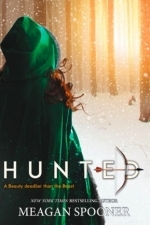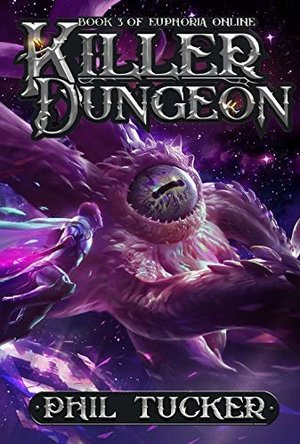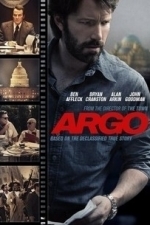
Christmas wallpapers & Home Themes for lock screen
Entertainment and Lifestyle
App
- The World no.1 Wallpaper Backgrounds App + Christmas Stickers in iMessage - This FREE App provides...

Yarn Magazine
Lifestyle and Magazines & Newspapers
App
If you enjoy yarn, this is the magazine for you. Yarn features a mix of projects, articles,...

Tank Battle: East Front 1944
Games and Entertainment
App
Tank Battle: East Front 1944 is the penultimate title in the successful ‘Tank Battle: East...
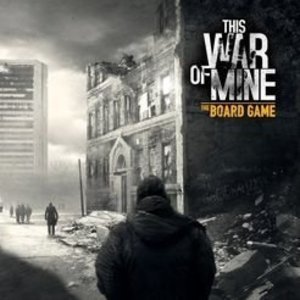
This War of Mine: The Board Game
Tabletop Game
This War Of Mine: The Board Game is the tabletop adaptation of the award-winning video game that...
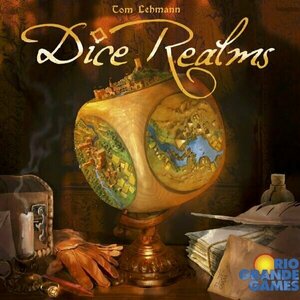
Dice Realms
Tabletop Game
In Dice Realms, players vie to improve and expand their realms, which are represented by...
Like the classic tale, Beauty is the youngest of three sisters and daughter of a merchant. In some versions, she also has three brothers and her sisters are unkind - but that is not the case in this retelling. They live in a nice house until a shipping gamble costs them everything. They are forced to move to their father's old hunting cabin, which is a three-day walk from their current home. Her father used to be a hunter, but his wife believed that it was too dangerous and asked him to stop. Despite that, as a child Beauty was allowed to go hunting with her father and learned to love it. Unfortunately, as she grew her father decided that it was not the way a lady should purport herself and no longer allowed her to hunt.
After the loss of their fortune, Yeva and her family must learn to make due with less. Her father takes up hunting again and goes off to catch game for them to store for the winter. Unfortunately, when he returns he is distraught and swears that the Beast he saw when he was younger is stalking him. When he doesn't return from his second trip, Yeva sets out to find him and this is where the story adopts some significantly different elements from the original tale.
In the original, the father enters a castle and accepts his host's hospitality, but upon leaving takes a single rose for his daughter Beauty and is told he has a choice. He shall either be condemned to death for it or he must stay in the castle. While these are not the events that lead to Yeva's time in the castle, nevertheless she ends up imprisoned there. Over time, she and the Beast grow to know one another - but her treatment isn't as kind overall as the original.
I really enjoyed the tales that Yeva told while she was in captivity because they built the lore of the world and gave us a look into what the characters had grown up listening to. Although Yeva spent most of her time as the castle, I do wish that we were able to get to know the other characters like her sisters a little better. They seem very kind, but relatively one-dimensional. As a result of the Beast's curse, I don't feel like we got to know him as well as we could have. I would have loved to watch him grow and connect with him as Yeva does so that I could feel that </i>yes, they could fall in love.</i> I liked Yeva, but her dog Doe-Eyes was probably my favourite character. The dog was so cheerful and loyal that you couldn't help but love her.
The world that Yeva knows is not one we get to see very often in young adult literature. It is a melding of Russia, with its unique environment and folklore, with a more fantastical world. Yeva tells tales of the Firebird, sees a creature that is half dragon and half woman, and learns to listen to the music of that other world. The world itself reminds me a lot of the Grisha trilogy, although the plots and characters are nothing alike. I would love to experience more of the lore that built this enchanted world in the form of novellas.
I would highly recommend this to young adult/teen readers who enjoy fairytales and retellings, especially ones with a unique take on the tale that includes a lot of culture and lore.
Ross (3284 KP) rated Killer Dungeon (Euphoria Online Book 3) in Books
Jan 4, 2019
The book starts off with Chris, low-ranked newbie with a knack for strategy, being the new leader/castellan of Castle Winter, charged with defending, repairing and upgrading the castle, caring for its inhabitants, fending off the nearby army of the undead and still trying to discover the hidden treasure in the dungeon.
This change in his status obviously precipitated a change in focus for him, which is understandable - a castellan with all these responsibilities can't still go off exploring. But this started to feel like those boring aspects of games like the Witcher/Red Dead Redemption where you have to go shopping, play card games, train a horse, collect herbs etc and was relatively dull.
While a raft of super-strength gamers try to tackle the seemingly unbeatable Dungeon, Chris decides he needs to buy goods and services in-game with the help of the deus-ex style pot of money he suddenly inherits. He is taken to explore some of the online world in order to do so. This is where I started to lose interest, as the shopping and political aspects of the world and narrative now takes over, when all you want to do is get into that dungeon (you know, the one mentioned in the title of the book) with the rest of the true gamers.
In all the dungeon is just sort of solved. It just happens. We are treated to a re-telling of the action from some of those gamers but this was totally unsatisfactory. Three perilous rooms are in that dungeon and we get to see next to none of the action in solving them.
There is something of a race against time as Chris has a deadline looming to find the treasure hidden in the dungeon to deliver to the lord of the undead. This adds to the thrill somewhat but then the genre-required conspiracy starts to grow (the game was designed by the all-powerful AI to help save mankind from itself), and then the book loses a lot of its original charm for me.
I loved this trilogy, but can't help but feel Tucker had designed a massive world for the story to take place in, and suddenly realised two books in that he hadn't explored any of it (the first two books were very narrow in scope considering the size of the online world but did not suffer for that) and was nearing the end of the three books he had planned. In my view this story had at least another two or three books in it, I would have loved to have seen the dungeon rooms solved in the same detailed manner as the puzzles in the first two books, and would have liked a lot less metaphysical elephant-god mumbo jumbo. I can't help but feel Tucker realised he had set himself up with unsolvable situations and a character who couldn't really put himself in those positions.
In short: Great story, rushed ending ("sod it, say everyone else does the hard work and then an elephant god solves the unsolvable")
Gareth von Kallenbach (980 KP) rated House of Wax (2005) in Movies
Aug 14, 2019
The latest remake to make the screen is The House of Wax which shares precious little with the 1953 Vincent Price classic aside from the title house and an abundance of wax figures. The story follows Carly Jones, (Elisa Cuthbert), a young college graduate who is planning to move from her small town to take an internship in New York. Her boyfriend Wade (Jared Padalecki) is unsure if he will follow her to the big city which is a source of tension between the otherwise happy couple.
Carly and Wade decide to take a road trip to a big sporting event, and have their friends Paige (Paris Hilton), Blake (Robert Ri’chard), Dalton (John Abrahams), and Carly’s brother Nick (Chad Michael Murray), along for the ride. In a true horror film cliche, the road trip becomes and overnight campout in a remote backwoods area where drinking, sex, and other youthful merriment abounds.
Of course the merriment is interrupted when a strange encounter with a mysterious truck and an unexpectedly broken car fan belt in the morning forces Carly and wade to stay behind to locate the needed part in a nearby town while their friends continue on to the game.
The local town is mostly empty, and looks like something out of the 60’s aside from numerous signs that tout the local wax museum. While exploring the empty town, Carly and Wade stumble upon a church where a service is in session, and meet Bo, (Brian Van Holt), who is the local mechanic who tells them he can get the needed part as soon as the service has ended. With time on their hands, Carly and Wade visit the local wax museum which is equally deserted, but filled with life like figures.
When Carly suddenly sees a bizarre figure lurking in the shadows the events soon unfold leaving Carly and Wade trapped in a nightmare that is out of control. As if that was not bad enough, their friends have become stuck in traffic and decide to forgo the big game and return to pick up Carly and Wade not knowing bizarre nightmare they are about to encounter.
Despite some flaws, House generally works and as horror films go, is entertaining. Sure the characters and plot are paper thin and characters seem to have a severe lack of common sense, yet despite the flaws, there are some good moments. The film goes almost 50 minutes before the mayhem starts, but when it does, the killings are some of the most brutal in horror film history. On more than one occasion during my press screener did I see a member of the audience hiding their face in the shoulder of a significant other during some of the films more intense moments.
The film also has a good villain that while not well defined, is nevertheless chilling and projects menace very well. The cast works well with one another given the limitations of the genre, and the pacing of the film by first time director Jaume Serra is effective in adding a bit of tension yet keeping the adrenalin moving during key parts.
My biggest issue with the film would be the ending that I thought took the Hollywood way out, with a big effects spectacle instead of staying focused on the characters and their plight, That being said, as mindless Summer thrills The House of Wax is a decent if albeit at times lacking film.
Gareth von Kallenbach (980 KP) rated Argo (2012) in Movies
Aug 7, 2019
Director and star Ben Affleck has brought a new side to the story to light in the form of his new film “Argo”, which is based upon true events which have recently become declassified. The story centers around six workers of the embassy in Tehran, who fled the chaos when a disgruntled mob stormed the embassy walls. At that time it was unheard of for an embassy to be occupied as they host country and internal security were thought to of been more than adequate protection.
However for a country in a state of revolution, much less one that was extremely upset with America’s refusal to return the deposed Shah to face trial, security from the local populace was not available when the unthinkable happened.
After being turned away by the British and New Zealand embassies, the six escapees find refuge in the residence of the Canadian ambassador Ken Taylor (Victor Garber), who refuses to turn them away despite the volatile political situation harboring them would create should they ever be discovered.
On the other side of the world, C.I.A. Director Jack O’Donnell (Bryan Cranston), and his staff are desperately looking for a way to retrieve not only the Americans held hostage but also the six individuals currently being sheltered by the Canadian ambassador.
With few viable options available, save for the longshot of trying to get the refugees to bike through 300 miles of winter and soldier laden roads to the Turkish border, Tony Mendez (Affleck), is brought in to find other options.
One evening, Tony gets the idea to go to Iran posing as a Canadian filmmaker on a location scouting trip for an upcoming film. His plan is to pass the refugees off as part of his crew thanks to newly issued passports from the Canadian government.
In order to add validity to his plan, Tony recruits award-winning makeup artist John Chambers (John Goodman), and producer Lester Siegel (Alan Arkin), to help establish the necessary cover for the operation.
Soon Tony, John, and Lester have obtained a script for science fiction film named “Argo”, and the use the Hollywood trades and publicity machine to establish their back story of their production company and film project.
With time running down, Tony must venture alone to Tehran to meet with and prepare the refugees for extraction as well as firming up their cover with the local Iranian authorities.
What follows is a tense political thriller that is extremely well performed and captivating throughout. What really impressed me about the film was that Affleck expertly paced it and refrain from using such overused stereotypes such as car chases, fight sequences, and love scenes to tell the story.
The cast is exceptionally good all around and the film does a good job capturing the look and the atmosphere of the situation without ever becoming preachy and taking extreme political stances. Instead the focus is on real people caught in an extraordinary situation from which they were unprepared, and the extraordinary measures taken by good people in the United States and Canada who stepped up and did the right thing regardless of the cost to them personally or politically.
“Argo”, was an extremely pleasant surprise in one of the most enjoyable films I have seen this year. While I understand it would not be for everyone, I would not be surprised to see the film get a few Oscar nods come awards season as they would be in my opinion well deserved.

Kids Song -Over 160 English Kids Song With Lyrics
Education and Music
App
- Over 160+ English Kids Song. - 11 Disc Catalogue, 16 Songs each Disc. Over 160 Songs. - Random...
